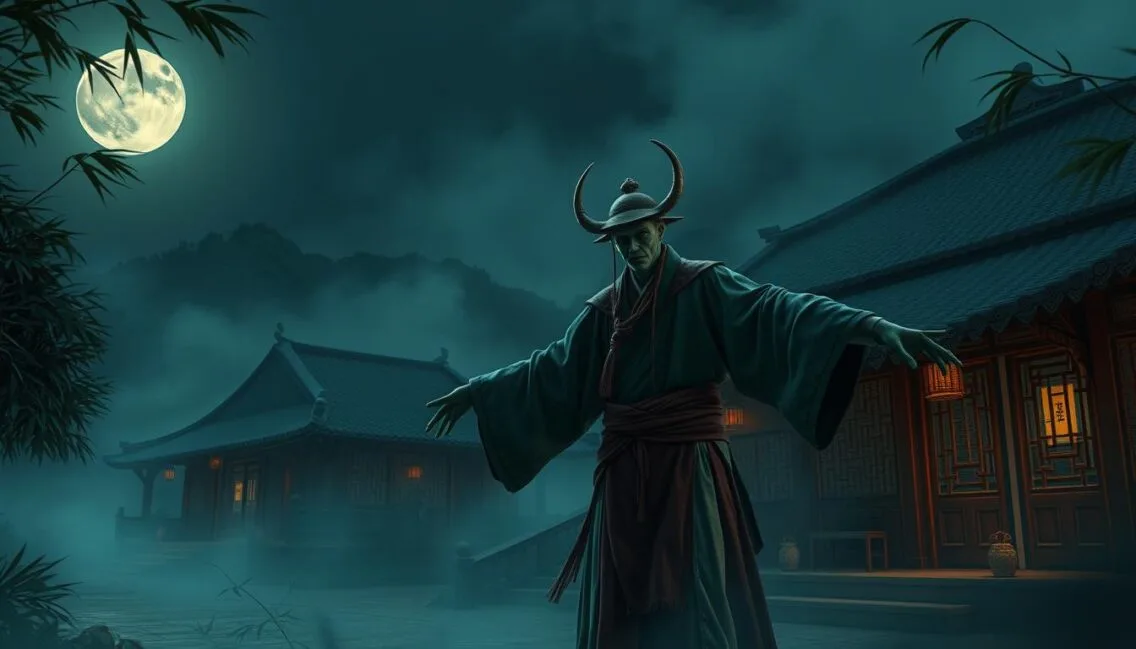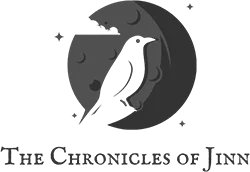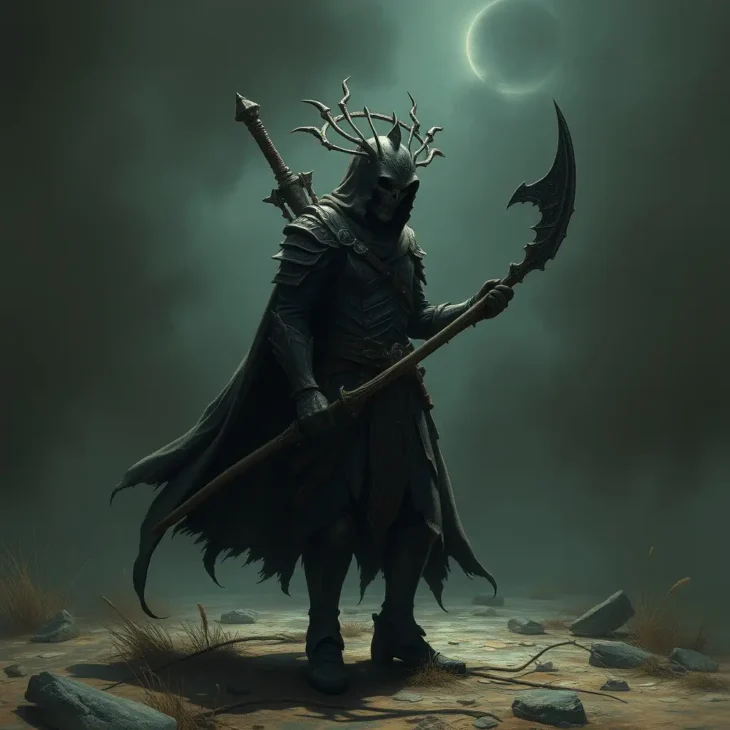Jiangshi (China): Ancient Chinese Vampire Folklore

Jiangshi, also known as Chinese hopping vampires, are undead creatures deeply rooted in Chinese legends and folklore. These eerie entities, typically depicted as stiff corpses dressed in the official garments of the Qing Dynasty, have captivated the imagination of people across East Asia. While they may resemble Slavic vampires in their anthropophagous nature, jiangshi possess a unique ability to absorb the life force, or qi, from living creatures rather than merely drinking blood.
The belief in jiangshi originates from the natural horror of dead bodies and the historical practice of “corpse-driving” in ancient China. Qing dynasty scholar Ji Xiaolan noted that a corpse could be reanimated due to a recent death or prolonged lack of decomposition. This fear of the undead led to various superstitions and protective measures, from installing thresholds to using specific items like mirrors and Taoist talismans to ward off these supernatural beings.
Key Takeaways
- Jiangshi, or Chinese hopping vampires, are undead creatures from ancient Chinese folklore and legends.
- They are typically depicted as stiff corpses dressed in Qing Dynasty official attire, with the ability to absorb life force (qi) from living creatures.
- The belief in jiangshi originates from the fear of dead bodies and the historical practice of “corpse-driving” in ancient China.
- Various protective measures, such as using mirrors, Taoist talismans, and installing thresholds, were used to ward off these supernatural beings.
- Jiangshi have become a popular subject in Chinese entertainment, with movies like “Mr. Vampire” becoming cult classics.
The Legend of Chinese Hopping Vampires
The legend of the jiangshi, or ‘hopping vampire’ of Chinese folklore, has captivated audiences for centuries. These mysterious undead creatures, whose name literally means ‘stiff corpse’, are believed to have originated from unburied bodies that have absorbed powerful yang energy or were improperly interred.
Historical Background in Chinese Mythology
The earliest written accounts of the jiangshi can be traced back to supernatural reflections between 1789 and 1798, collected posthumously in an 1800 volume. During the Qing Dynasty (1644–1912), the practice of ‘corpse driving’ – using necromancy to transport deceased migrants back home for proper burial – gave rise to the image of the hopping, animated corpse.
Evolution of Jiangshi Stories
Over time, jiangshi folklore has evolved from ancient Chinese tales to become a prominent part of the region’s popular culture. In the 1980s and 1990s, a surge of jiangshi-themed movies, such as the iconic “Mr. Vampire” (1985), captivated audiences and cemented the hopping vampire’s place in the zeitgeist. Directors like Ricky Lau, Sammo Hung, and Lam Ching-ying have significantly shaped the modern portrayal of the jiangshi in film.
Definition and Cultural Significance
The jiangshi is a unique and fascinating aspect of Chinese folklore. These undead legends have inspired a diverse range of cultural expressions, from movies and literature to toys and video games. The Jiangshi hopping vampire continues to captivate audiences, reflecting the enduring power of this ancient Chinese folklore tradition.
Origins of the Jiangshi Phenomenon
The origins of the jiangshi, or Chinese hopping vampires, can be traced back to a rich tapestry of Chinese mythology and supernatural beliefs. These undead entities have captured the imagination of countless storytellers and filmmakers, their roots delving deep into the cultural history of China.
Scholars have identified various sources that contribute to the origins of the jiangshi, including the practice of corpse-driving, the belief in the separation of the soul and body, and the absorption of vital qi energy. The Qing dynasty scholar Ji Xiaolan categorized the causes of reanimation into two main groups: recently deceased persons returning to life and long-buried corpses that do not decompose.
Interestingly, the legend of the jiangshi can be traced back to over two thousand years before the unification of China. After the Battle of Zhuolu in the Xiangxi area, it was recorded that the dead bodies covered thousands of miles, leading to the subsequent reanimation of corpses to be walked back home, which became a significant point of origin for corpse-driving practices in the Hunan province.
The Miao people, known for their expertise in sorcery, hired Taoist priests to perform the practice of ganshi, or corpse-herding, to transport the dead back to their homes. This ritual involved leading a line of dead bodies while placing talismans on their foreheads to facilitate their walking. Over time, the cultural practice of corpse-driving evolved into the supernatural phenomenon of the jiangshi, with its distinctive stiff posture and hopping movement pattern.
Physical Characteristics and Appearance
In Chinese folklore, the jiangshi – or “hopping vampire” – is a peculiar undead creature with a distinctive appearance. These Chinese vampire characteristics range from recently deceased individuals to heavily decayed corpses, often with greenish-white skin and long, unkempt hair. One of the defining features of a jiangshi is their stiffness, a result of the rigor mortis that sets in after death.
Traditional Qing Dynasty Attire
Traditionally, jiangshi are depicted wearing the official uniforms of the Qing Dynasty, complete with the distinct mandarin collars and long sleeves. This formal attire is thought to be a remnant of the historical practice of transporting corpses for burial, where the deceased were often dressed in their finest garments.
Corpse-like Features
Beyond their rigid posture, jiangshi also exhibit other corpse-like features, such as long, sharp black fingernails and a paper talisman seal on their forehead. The pale, ashen skin of these Chinese vampires is sometimes attributed to the growth of fungus on the decaying body.
Movement and Behavior Patterns
One of the most distinctive traits of the jiangshi is their method of locomotion – they are known to “hop” rather than walk, a result of their stiffness and lack of suppleness. These undead features are often accompanied by a predatory behavior, as jiangshi are believed to possess supernatural strength and the ability to run, dodge, or even fly in search of their next victim.
The Practice of Corpse-Driving in Ancient China
In the rich tapestry of ancient Chinese customs, the practice of “corpse-driving” played a significant role in shaping the mythos of the jiangshi, or “hopping vampire.” This unique tradition involved the repatriation of dead laborers’ bodies to their hometowns for proper burial. Professional corpse-drivers would transport the trussed-up corpses, often moving them at night, creating the ghostly impression of hopping, reanimated cadavers.
The practice of transporting a corpse over a thousand li (a traditional Chinese unit of distance) was a common folk tradition in ancient China. Taoist priests were frequently hired to carry the deceased back to their rural hometowns for burial, especially when families or companions could not afford the cost of wagons. This modus operandi was particularly prevalent in the Xiangxi region, where many people worked far from their ancestral villages.
Interestingly, the jiangshi stories may have been influenced by this widespread practice of corpse transportation. As the corpses were often moved only under the cover of darkness, the Taoist priests’ use of long bamboo rods to carry the bodies gave the eerie impression of the dead “hopping” along. This ritualistic procession, coupled with the cultural significance of proper burial rites in traditional Chinese society, likely contributed to the enduring legend of the jiangshi.
Jiangshi (China): Historical Development and Cultural Impact
The Chinese vampire folklore, known as the jiangshi, has undergone a remarkable cultural evolution over time, with regional variations across China and East Asia. The jiangshi, or “Chinese hopping vampire,” has captivated audiences worldwide, inspiring a unique genre of horror-comedy films and stories that blend traditional folklore with elements of Western vampire mythology.
Regional Variations
The jiangshi phenomenon is not limited to a single region, but rather has diverse representations across China. For instance, the province of Jiangxi, known for its rich cultural heritage, has its own distinct interpretations of the jiangshi. With an area spanning 63,600 square miles and a population of over 4.5 million as of 2020, Jiangxi has contributed to the varied depictions of these Chinese vampire creatures.
Modern Interpretations
In recent decades, the jiangshi has experienced a surge in popularity, particularly in the realm of Asian cinema and entertainment. Jiangshi films emerged fully into the Chinese popular imaginary through Hong Kong films of the 1980s and 90s, enjoying considerable cult status in the West. These modern interpretations often blend traditional folklore with Western vampire tropes, creating a unique and captivating visual aesthetic. The jiangshi’s ability to traverse cultural boundaries has solidified its place as an enduring symbol of Chinese vampire lore and its influence on global popular culture.
Methods of Creating a Jiangshi
The creation of a jiangshi, a Chinese undead being, is rooted in ancient supernatural beliefs and reanimation techniques. According to folklore, these creatures can arise through a variety of methods, including violent deaths, improper burials, and the failure to decompose after interment. Other causes may involve being struck by lightning, animal interference (such as cats jumping over coffins), or the absorption of sufficient yang energy.
Some stories even mention a mysterious “jiangshi poison” that can gradually transform a person into a jiangshi over time. This supernatural process of undead creation taps into the rich tapestry of Chinese supernatural beliefs, making the jiangshi a captivating figure in the realm of Asian folklore and mythology.
The diverse methods of jiangshi creation reflect the enduring cultural significance of these undead beings in Chinese supernatural lore. From violent deaths to the absorption of powerful life forces, the jiangshi’s origins are intertwined with the ancient beliefs and reanimation techniques that have captured the imagination of generations of storytellers and audiences alike.
Powers and Abilities of Chinese Vampires
Jiangshi, the legendary Chinese vampires, possess an array of supernatural abilities that set them apart from their Western counterparts. These undead entities are known for their Jiangshi powers, including the remarkable ability to absorb qi, or life force, from living beings. By draining their victims’ vital energy, Jiangshi are able to sustain their own unnatural existence.
In addition to this qi energy absorption, Jiangshi are also blessed with supernatural strength. These Chinese vampires are often depicted as ferocious and ravenous, capable of giving chase and easily dodging attacks. Some versions of the legend suggest that Jiangshi can even grow stronger over time, acquiring new skills and powers as they continue to feed on the life force of the living.
The distinctive hopping motion of Jiangshi, a result of their stiff, outstretched limbs, adds to their eerie and unsettling presence. These ancient Chinese vampires are a truly unique and captivating aspect of the rich tapestry of supernatural folklore from the East.
Traditional Protection Methods and Countermeasures
To defend against the supernatural threats posed by jiangshi, or Chinese vampires, a variety of traditional protection methods and countermeasures have been developed over the centuries. These practices reflect a deep-rooted blend of Chinese folklore, Taoist beliefs, and superstitions.
One of the most well-known defenses is the use of mirrors, which are believed to confuse and disorient jiangshi, preventing them from recognizing their own reflection. Peach wood items, such as talismans or swords, are also commonly employed to ward off these undead entities. Rooster calls are thought to have the power to drive jiangshi away, as the creatures are supposedly averse to the sound.
Other protective measures include the use of jujube seeds, fire, and Taoist talismans inscribed with ancient spells and symbols. Glutinous rice, adzuki beans, and the blood of a black dog have also been used in various rituals to create barriers against jiangshi. Architectural features, such as thresholds in doorways, are likewise believed to prevent these supernatural beings from entering one’s home.
FAQ
What are jiangshi and where do they come from?
What is the cultural significance of jiangshi?
What are the origins of the jiangshi phenomenon?
What are the physical characteristics and appearance of jiangshi?
What is the practice of “corpse-driving” in ancient China?
How have jiangshi legends evolved over time?
What are the various methods for creating a jiangshi?
What are the supernatural abilities of jiangshi?
How can jiangshi be protected against or countered?
Source Links
- Jiangshi
- The Living Dead: Chinese Hopping Vampires
- Chinese Hopping Vampires: The Qing Dynasty roots behind the Jiangshi legend | All About History
- “Hopping Corpse, Chinese Vampire, Where It’s Came From?”
- Monstrum | The Ancient Terror of the Chinese Hopping Corpse, Jiangshi | Season 6 | Episode 9 | PBS
- Jiang Shi: The Terrifying Chinese Vampires of the Qing Dynasty
- A Dead Occupation: Transporting a Corpse over a Thousand Li
- Jiangshi: Beyond the Zombie Legend in Chinese Culture – maayot
- Jiangshi
- A Mystery in Western Hunan: Walking Corpse
- The Hopping Dead: the Corpse Walkers of China | The Order of the Good Death
- Jiangxi | History, Population, Map, & Facts | Britannica
- The Jiang Shi
- Hop on pop: jiangshi films in a transnational context. – Document
- The Breath Sucking Vampire: Jiangshi
- A challenge for fellow aspiring authors: make the Jiangshi ("Chinese vampire") scary
- Jiangshi
- Jiang Shi Physiology
- Jiangshi – 1d6chan
- Screening for anti-influenza virus compounds from traditional Mongolian medicine by GFP-based reporter virus
- Challenges and solutions of energy and resources security in high-quality development stage
- 2006 Annual Report



